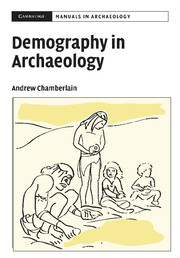Book contents
6 - DEMOGRAPHY AND DISEASE
Published online by Cambridge University Press: 02 December 2009
Summary
DISEASE IN ARCHAEOLOGICAL POPULATIONS
Concepts and evidence of disease
Disease, illness and sickness
A contemporary dictionary definition of disease is a disorder or want of health in mind or body: an ailment: cause of pain (Schwarz et al., 1990). This broad but succinct definition summarises the widely held modern Western view that there is both a biological dimension to disease – the underlying organic disorder that perturbs the normal or optimal functioning of the individual – and a social or psychological dimension – the recognition and expression of the disorder as a discomforting or socially disvalued condition. From the theoretical perspective of medical anthropology, the term ‘disease’ is usually applied strictly to the biomedical abnormality or pathology, while ‘illness’ and ‘sickness’ are variably used to designate the individual consciousness and social recognition of the presence of an underlying disease condition (Young, 1982; McElroy and Townsend, 1996). These distinctions are important in understanding the occurrence and spread of diseases in populations, because individual and social responses to disease play a part in determining the overall frequencies of disease in communities and in the manner in which a society manages the burden of disease amongst its members.
In biomedical research that is directed primarily towards the understanding, control and treatment of ill-health, diseases are usually distinguished and classified according to their causative agents.
- Type
- Chapter
- Information
- Demography in Archaeology , pp. 151 - 176Publisher: Cambridge University PressPrint publication year: 2006

